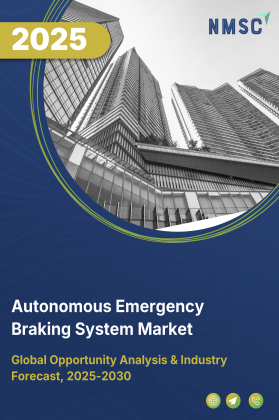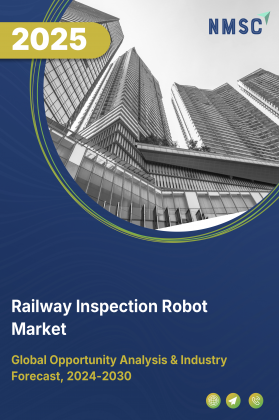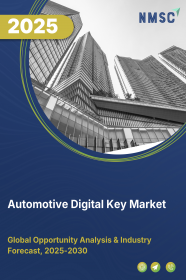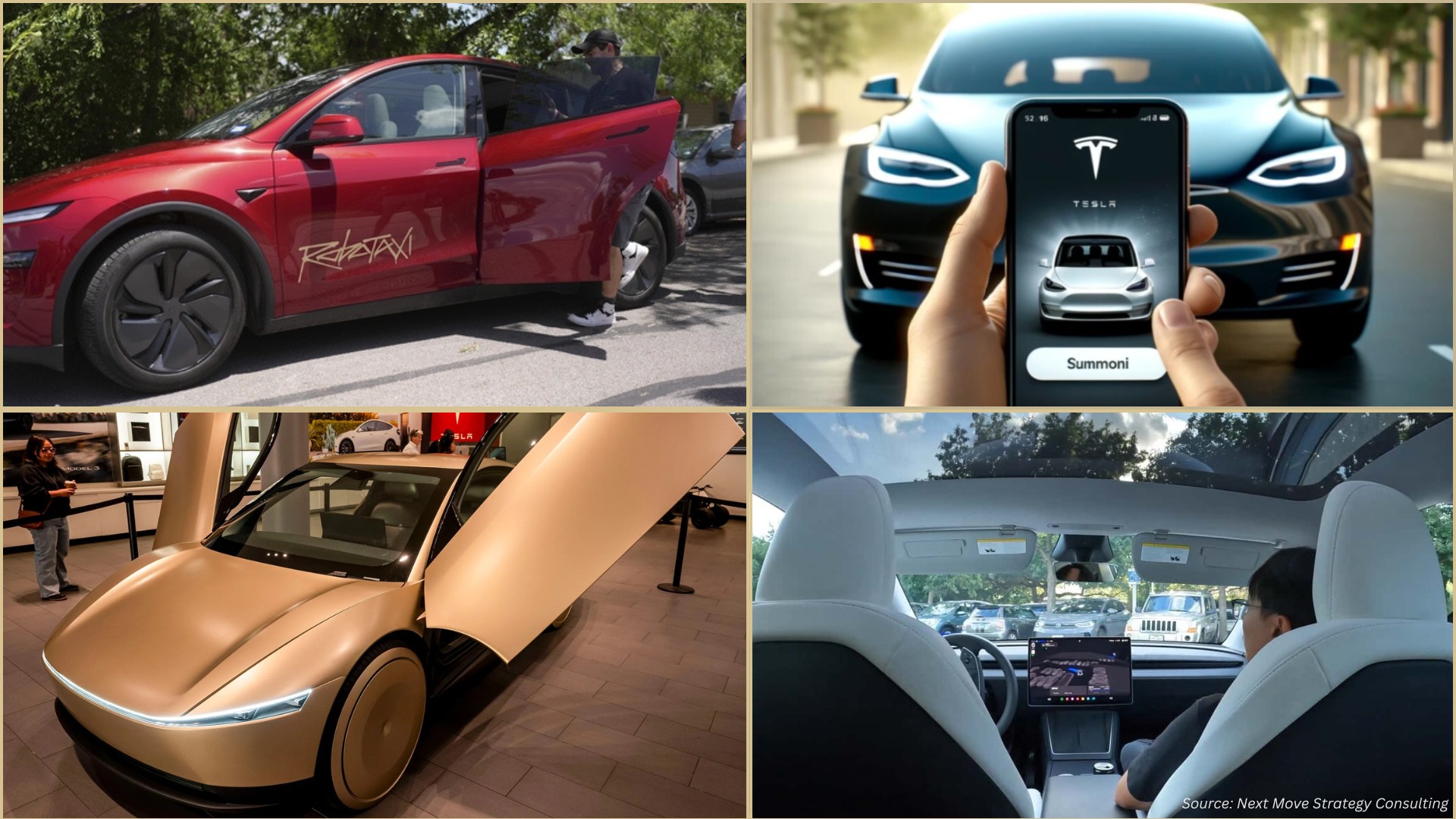
Advanced Driver Assistance Systems (ADAS) Market by Component (Sensor, Processor, Software, and Others), by Level of Autonomy (L1, L2, L3, L4, and L5), by System Type and Others - Global Opportunity Analysis and Industry Forecast, 2022 - 2030
Industry: Automotive & Transportation | Publish Date: 14-Feb-2025 | No of Pages: 871 | No. of Tables: 607 | No. of Figures: 555 | Format: PDF | Report Code : AT488
Market Definition
The global Advanced Driver Assistance Systems (ADAS) Market size was valued at $20.73 billion in 2021 and is predicted to reach USD 74.57 billion by 2030 with a CAGR of 14.2% from 2022 to 2030. ADAS can be defined as a group of electronic systems embedded in vehicles to assist a driver in emergency situations such as incorrect lane departure, collision, and pedestrian avoidance.
Intelligent driver assistance uses various sensors in a vehicle, such as radar and cameras, to perceive the environment and provide information to the driver. These onboard sensors enable ADAS to automatically avoid accidents and collisions. Moreover, it can automate lighting, provide adaptive cruise control, incorporate satellite navigation and traffic warnings, alert drivers to possible obstacles, and assist in lane departure and lane centering among others.
Market Dynamics and Trends
The increasing demand for comfort and safety in vehicles along with the rising demand for luxury vehicles is increasing the adoption of safety technologies such as advanced driver assistance systems by car manufacturers across the world. For instance, in April 2021, Toyota Motor Corporation launched two cars LS and Mirai equipped with Toyota’s latest ADAS technology called advanced drive.
Toyota’s advanced drive is integrated with artificial intelligence (AI) and deep learning technology to forecast various situations that may be encountered while driving and aid with driver responses. Also, stringent vehicle safety regulations by governments to improve road safety and enable fully driverless vehicles are further driving the ADAS market growth.
For instance, in July 2022, European Commission announced new vehicle general safety regulations for cars launched in the European union. These regulations have made advanced driver assistant systems (ADAS) mandatory for all road vehicles that is cars, vans, trucks, and buses to integrate intelligent speed assistance, reversing detection with cameras or sensors, attention warning, lane keeping systems, and automated braking.
However, the lack of required infrastructure such as well-organized roads, lane marking in developing countries for proper functioning, and high installation costs of ADAS Systems are the factors restraining the growth of the market. On the contrary, the emergence of autonomous electric vehicles that use onboard ADAS systems to navigate and avoid collisions or accidents is expected to create ample opportunities for the advanced driver assistance system industry, in the coming years.
Market Segmentations and Scope of the Study
The ADAS market is segmented on the basis of components, level of autonomy, system type, vehicle type, and geography. On the basis of components, the market is classified into sensors, processors, software, and others. The sensor segment is further divided into image sensor/camera, LiDAR sensor, radar sensor, ultrasonic sensor, Infrared (IR) sensor, and laser sensor.
Based on the level of autonomy, the market is divided into L1, L2, L3, L4, and L5. On the basis of system type, the market is divided into Adaptive Cruise Control (ACC), Lane Departure Warning System (LDWS), Forward Collision Warning (FCW), Tire Pressure Monitoring System (TPMS), Intelligent Parking Assist System (IPAS), Adaptive Front Light (AFL), Driver Monitoring System (DMS), Automatic Emergency Braking System (AEBS), Blind Spot Detection (BSD), Pedestrian Detection System, Traffic Jam Assist System (TJAS), Cross Traffic Alert (CTA), Night Vision System (NVS), Road Sign Recognition (RSR), Heads-Up Display (HUD), and e-call system.
Based on vehicle type, the market is categorized into IC engine vehicles and electric vehicles. The IC engine vehicle segment is further divided into passenger cars, light commercial vehicles, trucks, and buses. The electric engine vehicle market is further classified into Battery Electric Vehicles (BEV), Hybrid Electric Vehicles (HEV), Plug-In Hybrid Electric Vehicle (PHEV), And Fuel Cell Electric Vehicle (FCEV). The geographical breakdown and analysis of each of the aforesaid segments include regions such as North America, Europe, Asia-Pacific, and RoW.
Geographical Analysis
North America’s advanced driver assistance systems market share is expected to continue its dominance during the forecast period. This is attributed to factors such as the high demand of electric vehicles (EVs) in countries such as the USA and Canada that uses the ADAS system for the safety and convenience of the driver. For instance, in 2021, Tesla Inc. sold 308,650 electric vehicles in the United States.
Moreover, the presence of key market players such as Nvidia Corporation and Texas Instruments Inc. further boosts the market growth in this region. For instance, in March 2022, NVIDIA announced the production of its autonomous vehicle computer called NVIDIA Drive Orin. Orin will serve as a central nervous system and AI brain for new energy vehicles to deliver improved AI features while ensuring safe and secure driving capabilities.
On the other hand, Europe advanced driver assistance systems market revenue is expected to show a steady rise by 2030 due to the high adoption of ADAS by European car manufacturers such as Audi, Porsche, and Skoda owing to the well-established road infrastructure in this region that increases the compatibility of ADAS. For instance, the lane assists feature of driver-assist technology tracks road marking using onboard cameras to monitor the car's position on the road to keep the car in its lane.
Moreover, the high demand for luxury cars that are equipped with ADAS in countries such as Germany, Italy, and the United Kingdom owing to the high per capita income and high purchasing power in this region is further driving the growth of the ADAS market.
Competitive Landscape
Various key players operating in the ADAS industry include Continental AG, Magna International, Renesas Electronics Corporation, Autoliv Inc., Nvidia Corporation, Robert Bosch Gmbh, Nxp Semiconductors, Texas Instruments Incorporated, Panasonic Holdings Corporation, Zf Friedrichshafen Ag, Denso Corporation, Hyundai Mobis Company, Joyson Safety Systems, Delphi Technologies Plc, Valeo.
These market players continue to adopt various development strategies including joint ventures and product launches across various regions to maintain their dominance in the global market. For instance, in May 2022, Continental AG launched two new sensors for electric vehicles called the current sensor module (CSM) and battery impact detection (BID) system. These sensors are specifically designed for electrified vehicles to provide current and temperature information of batteries to keep them safe and retain long-term durability.
Moreover, in May 2022, Magna International collaborated with BlackBerry Limited to develop various integrated ADAS solutions for carmakers across the world. Under this collaboration, BlackBerry will provide Magna with the QNX Platform for ADAS, as well as professional engineering services for system-level integration, performance optimization, and solution validation.
Key Benefits
-
The ADAS market report provides a quantitative analysis of the current market estimations from 2022 to 2030. This analysis assists in identifying the prevailing market opportunities to capitalize on.
-
The study comprises a detailed analysis of the ADAS market,including the current and future trends for depicting the prevalent investment pockets in the industry.
-
The information related to key drivers, restraints, and opportunities and their impact on the ADAS market is provided in the report.
-
The competitive analysis of the market players along with their market share is mentioned.
-
The SWOT analysis and Porter’s Five Forces model are elaborated on in the study.
-
The value chain analysis in the market study provides a clear picture of the stakeholders’ roles.
Advanced Driver Assistance Systems Market Key Segments
By Component
-
Sensor
-
Image Sensor
-
LiDAR Sensor
-
Radar Sensor
-
Ultrasonic Sensor
-
Infrared (IR) Sensor
-
Laser
-
-
Processor
-
Software
-
Other
By Level of Autonomy
-
L1
-
L2
-
L3
-
L4
-
L5
By System Type
-
Adaptive Cruise Control (ACC)
-
Lane Departure Warning System (LDWS)
-
Forward Collision Warning (FCW)
-
Tire Pressure Monitoring System (TPMS)
-
Intelligent Park Assist System (IPAS)
-
Adaptive Front Light (AFL)
-
Driver Monitoring System (DMS)
-
Automatic Emergency Braking System (AEBS)
-
Blind Spot Detection (BSD)
-
Pedestrian Detection System (PDS)
-
Traffic Jam Assist System (TJAS)
-
Cross Traffic Alert (CTA)
-
Night Vision System (NVS)
-
Road Sign Recognition (RSR)
-
Heads-Up Display (HUD)
-
E-Call System
By Vehicle Type
-
IC Engine Vehicle
-
Passenger Cars
-
Light Commercial Vehicles (LCVs)
-
Trucks
-
Buses
-
-
Electric Vehicle
-
Battery Electric Vehicles (BEV)
-
Hybrid Electric Vehicles (HEV)
-
Plug-In Hybrid Electric Vehicle (PHEV)
-
Fuel Cell Electric Vehicle (FCEV)
-
By Geography
-
North America
-
US
-
Canada
-
Mexico
-
-
Europe
-
UK
-
Germany
-
France
-
Spain
-
Italy
-
Netherlands
-
Rest of Europe
-
-
Asia-Pacific
-
China
-
Japan
-
India
-
Australia
-
South Korea
-
Taiwan
-
Vietnam
-
Rest of Asia-Pacific
-
-
ROW
-
Latin America
-
Middle East
-
Africa
-
Key Players
-
Continental AG
-
Magna International
-
Renesas Electronics Corporation
-
Autoliv Inc.
-
Nvidia Corporation
-
Robert Bosch Gmbh
-
Nxp Semiconductors
-
Texas Instruments Incorporated
-
Panasonic Holdings Corporation
-
Zf Friedrichshafen Ag
-
Denso Corporation
-
Hyundai Mobis Company
-
Joyson Safety Systems
-
Delphi Technologies Plc
-
Valeo
REPORT SCOPE AND SEGMENTATION:
|
Parameters |
Details |
|
Analysis Period |
2021–2030 |
|
Base Year Considered |
2021 |
|
Forecast Period |
2022–2030 |
|
Market Size Estimation |
Billion (USD) |
|
Market Segmentation |
By Component (Sensor, Processor, Software, and Others), by Level of Autonomy (L1, L2, L3, L4, and L5), by System Type (Adaptive Cruise Control, Lane Departure Warning System, Forward Collision Warning, Tire Pressure Monitoring System, Intelligent Park Assist System, Adaptive Front Light, Driver Monitoring System, Automatic Emergency Braking System, Blind Spot Detection, Pedestrian Detection System, Traffic Jam Assist System, Cross Traffic Alert, Night Vision System, Road Sign Recognition, Heads-Up Display, and E-Call System), by Vehicle Type (IC Engine Vehicle and Electric Vehicle) |
|
Geographical Segmentation |
North America (U.S., Canada, Mexico) Europe (UK, Germany, France, Spain, Italy, Netherlands, Rest of Europe), Asia-Pacific (China, Japan, India, Australia, South Korea, Taiwan, Vietnam, Rest of Asia-Pacific), Rest of the World (Latin America, Middle East, Africa) |
|
Companies Profiled |
Continental AG, Magna International, Renesas Electronics Corporation, Autoliv Inc., Nvidia Corporation, Robert Bosch Gmbh, Nxp Semiconductors, Texas Instruments Incorporated, Panasonic Holdings Corporation, Zf Friedrichshafen Ag, Denso Corporation, Hyundai Mobis Company, Joyson Safety Systems, Delphi Technologies Plc, Valeo. |




















 Speak to Our Analyst
Speak to Our Analyst

























